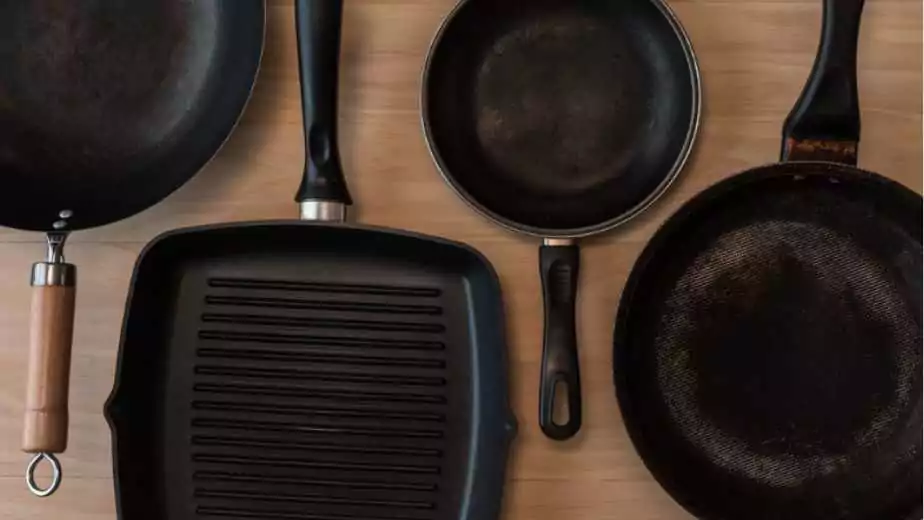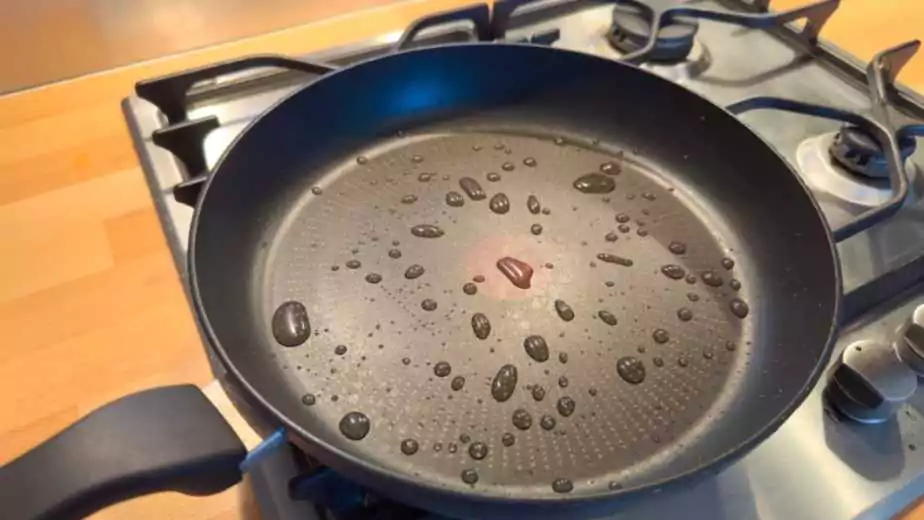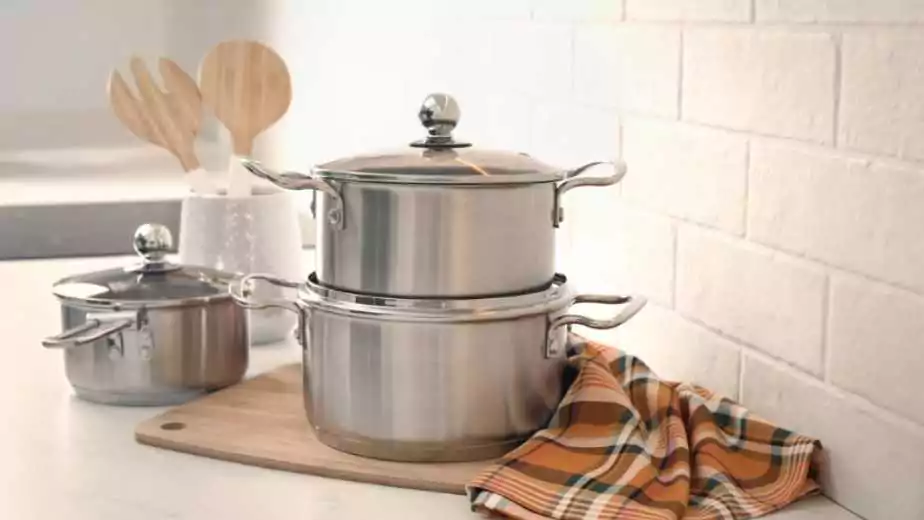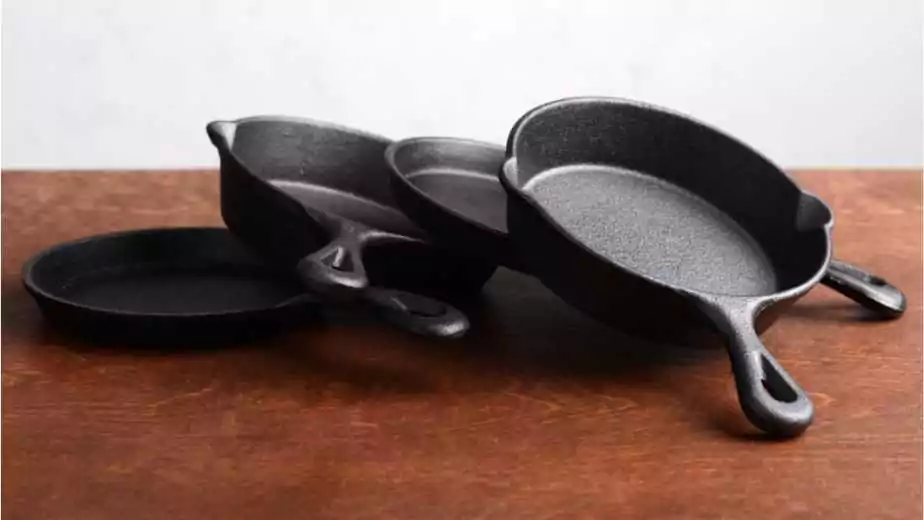Is Non-Stick Cookware Harmful To Health? Read This!

When it comes to creating your favorite meals, non-stick cookware can work wonders in the kitchen -easy to use, and easy to clean. From frying pans to baking dishes, these non-stick cookware allow you to cook with less oil and promise faster clean-up. However, in recent years there have been concerns about the safety of these delicate kitchen cookware. Is non stick cookware harmful to health, or safe for regular use in the kitchen?
This blog aims to explore the safety of non-stick cooking based on the latest research and expert insight. We will analyze the latest research and gather expert opinions to provide detailed information on whether these popular cookware are suitable for our ovens or should be used with caution. At the end of this discussion, you should have a clear understanding of whether or not you should use non-stick cookware in everyday cooking.
1 What is Non-Stick Cookware?
Non-stick cookware refers to pots, pans, etc. that have been treated with a coating to prevent food from sticking to them during cooking. These cookware are especially popular because of their simplicity to use and require less cooking oils and fats, which can help make healthier meals.
The most common material used for non-stick coatings is polytetrafluoroethylene (PTFE), commonly known by the name Teflon. Invented in the 1940’s, Teflon has become synonymous with non-stick cooking utensils and is used in a variety of other applications as a lightweight and corrosion-resistant material there are sharp coatings derived from ceramics and silicones, which are marketed as healthy or eco-friendly alternative.
The technology behind these non-stick surfaces is made up of coatings on the base (usually made of metals such as aluminum or stainless steel) When heated, these layers polymerize and reduce contact between the cooker and the food. Not only does this prevent sticking without the need for extra butter or oil, but it is also easier to clean as the food residue and grease do not adhere strongly to the surface.

2 Historical Context and Evolution of Non-Stick Cookware
The improvement of non-stick cookware is a captivating tale of innovation and edition, reflecting the dramatic modifications in technology, health awareness, and consumer preference since 1938 when Dr. Roy Plunkett, a chemist, by chance determined Polytetrafluoroethylene (PTFE), which was later advertised under the name Teflon. This unintended discovery was first used in cookware in 1950, giving delivery to the non-stick frying pan. Teflon’s tremendous capacity to resist sticking and high temperatures speedy made it a family name.
But with the popularity of non-stick cookware, the safety of PTFE coatings commenced to be raised, in particular while overheated PTFE can begin to degrade as temperatures upward thrust, and fumes that may be dangerous to people and pets. In response to those issues, producers have persevered to adjust their technology to enhance safety and performance.
Since the early 2000s, there has been a massive shift towards getting rid of perfluorooctanoic acid (PFOA), a chemical once commonly used in the manufacture of PTFE coatings however related to numerous health issues. By 2013, major manufacturers phased out PFOA, and more recent formulations have been developed that do not require this substance, decreasing the associated health dangers.
Furthermore, the evolution of non-stick cookware has also visible the emergence of opportunity substances, such as ceramic coatings. These ceramics provide a non-stick experience without the use of PTFE, attractive to health-conscious purchasers in search of chemical-loose options. Innovations in this area continue to extend, with producers exploring other non-poisonous substances and stepped-forward technologies to enhance each protection and cooking performance.
3 Is Teflon Safe? Health Concerns Associated with Non-Stick Cookware

While non-stick cookware offers undeniable convenience and practicality, it is not without controversy, especially when it comes to chemical coatings. The main materials in question are Polytetrafluoroethylene (PTFE) and Perfluorooctanoic Acid (PFOA). Understanding the potential health effects of these chemicals, especially when non-stick cookware is used for high-temperature cooking, is important for appropriate raw material selection.
PTFE (Polytetrafluoroethylene), generally known as Teflon, has been used to coat cookware since the mid-20th century. While PTFE itself is considered inert and secure for cooking at encouraged temperatures, it starts to degrade and release toxic compounds at temperatures exceeding 500°F (260°C). This degradation can cause a situation known as polymer fume fever in humans, showing flu-like signs, and may be deadly to birds due to their extra touchy breathing structures.
PFOA (Perfluorooctanoic Acid) has historically been used inside the manufacture of PTFE but is not present in big amounts in the final Teflon product. However, PFOA has turned out to be a health difficulty, as it’s miles a continual environmental contaminant linked to numerous health issues, consisting of thyroid problems, continual kidney disease, liver disorder, and uterus most cancers.
Research on the health influences of these chemical substances has been massive. Studies have indicated that while consumer products, inclusive of cookware, are not a major supply of exposure to PFOA and PTFE, the manufacturing and disposal process of these products do contribute to environmental PFOA contamination. Health risks commonly arise from inhaling these fumes released from overheated cookware, rather than from direct ingestion of the chemicals through food.
4 Alternatives to Non-Stick Cookware
While non-stick cookware offers important comfort and protection, consumers are still worried and looking for alternatives to non-stick cookware. There are many options, every with their execs and cons in phrases of health, dealing with and cooking. Let’s have a look at three famous alternatives: stainless steel, solid iron, and ceramic cookware.
Stainless Steel Cookware

- Pros: Stainless steel is very durable and resists scratches, distortion, and corrosion. It doesn’t react with acidic foods and doesn’t break down chemicals into food, making it a safe choice in extreme heat. It’s also great for searing, browning, and sautéing.
- Cons: Stainless steel cookware lacks natural non-stick properties, which can make food sticky and may need more oil during cooking. Cleanliness can also require a lot of effort.
Cast Iron Cookware

- Pros: Cast iron is valued for its excellent heat transfer and even heating. When properly packed, it creates a naturally non-stick surface without the need for synthetic coatings. Cast iron can also add a small amount of iron to your diet, which can be beneficial.
- Cons: Cast iron cookware is heavier than other types, making it difficult to handle. It also requires regular seasoning to maintain its non-stick properties and prevent rust. Additionally, it is not advisable to cook acidic foods in cast iron as they can strip the seasoning and lead to metallic flavours in the food.
Ceramic Cookware

- Pros: Ceramic cookware has a clay-based coating that’s free from PTFE and PFOA, and offers a non-stick cooking experience without the concerns associated with traditional non-stick coatings. It’s available in a variety of colours and styles and is generally considered safe for most cooking temperatures.
- Cons: The main drawback of ceramic cookware is its durability. The ceramic coating can chip or wear out faster than other materials, especially if used frequently at high temperatures or cleaned with abrasive materials.
5 Expert Opinions and Research
The debate over the safety of non-stick cookware is enriched by insights from various experts including health professionals, chemists, and culinary experts. Coupled with recent studies, these perspectives help paint a clearer picture of the long-term health effects associated with non-stick cookware usage.
Health Professionals
Health experts often focus on the potential toxicological aspects of non-stick coatings when they are subjected to overheating. The consensus is that while normal use of non-stick cookware does not pose significant health risks, overheating these products can lead to the release of toxic compounds. Medical professionals typically advise keeping non-stick cookware at medium heat or lower to prevent these risks. Additionally, they recommend proper ventilation in kitchens to avoid inhaling any fumes that may be released during cooking.
Chemists
Chemists study the stability of coatings in uncoated materials under different conditions. Their study showed that ingestion of particulate matter is not the main concern, but inhaling fumes from overheated cooking utensils Chemists’ studies have also helped phase out PFOA and helped develop safer alternatives at elevated temperatures. Chemists study the stability of coatings in uncoated materials under different conditions. Their study showed that ingestion of particulate matter is not the main concern, but inhaling fumes from overheated cooking utensils Chemists’ studies have also helped phase out PFOA and helped develop safer alternatives at elevated temperatures.
Cooking Experts
Culinary professionals often weigh in on the performance and safety of non-stick cookware, emphasizing the importance of using these tools within manufacturer-recommended temperature limits. They typically advocate for using non-stick cookware for specific types of cooking — like eggs or pancakes — where low to medium heat is sufficient and beneficial for the best results.
Recent Studies
Recent scientific studies have sought to quantify the long-term health effects of non-stick cookware usage. For instance, research conducted in the past decade has largely focused on the rates of exposure to chemicals like PFOA before it was phased out and the potential links to health issues. These studies generally conclude that while there is a potential risk from chronic high-level exposure (mostly occupational), normal household use of non-stick cookware does not significantly increase health risks if used properly.
6 Guidelines for Safe Use of Non-Stick Cookware
To ensure that you can enjoy the benefits of non-stick cookware without compromising on safety, it’s important to adhere to best practices for both use and maintenance. Here are practical tips and guidelines that can help you safely use and maintain your non-stick cookware.
Practical Tips for Safe Usage
- Avoid Overheating: Never cook stale materials to high temperatures as this can cause the non-stick coating to deteriorate at temperatures above 500°F (260°C) This deterioration can produce toxic fumes contained from it, so it is best to cook down to a high temperature.
- Use Proper Utensils: Use wooden, silicone, or plastic utensils instead of metal to avoid scratching the non-stick surface. Scratching can damage the coating and reduce the lifespan and safety of your cookware.
- Ventilation: Always cook food in a well-ventilated area to prevent any possible fumes from being inhaled, especially if it accidentally overheats.
- Avoid Preheating at High temperatures: Non-stick pans heat up faster than their uncoated counterparts. Avoid preheating them at high temperatures. Add food once the pan is warm to minimize the risk of overheating.
Maintenance Tips
- Cleaning: Let your cooking utensils cool completely before cleaning. Wash your hands with an oiled sponge or cloth and a mild wipe. Although many non-stick dishes are advertised as dishwasher safe, hand washing can help keep the coating intact.
- Storage: Carefully store non-stick cookware to prevent surface damage. When the moulds are combined, line them with a non-stick container or paper towel.
- Check regularly: Check your cookware regularly for signs of wear, corrosion, or excessive wear. If a non-stick coating shows signs of severe wear, consider replacing the product for safety.
- Proper cooking oil: Use some oil or butter to improve cooking efficiency and reduce the chances of overheating. But avoid using cooking sprays as some may contain lecithin, which can accumulate on non-sticky surfaces and become more difficult to remove over time.
7 Wrapping Up - Is non-stick cookware safe?
In this blog, we’ve examined non-stick cookware, particularly PTFE-coated options like Teflon, discussing its benefits and the concerns over potential health risks when overheated. Experts confirm that non-stick cookware is generally safe if not overheated and properly maintained. As manufacturers have moved away from the use of PFOA, many protection concerns have been addressed. Stainless steel, cast iron, ceramic, and other material options each offer exceptional benefits and meet cooking preferences and health considerations
When choosing cookware, weigh the convenience of stainless steel against the potential health risks, taking into account your cooking habits and your health. We encourage you to share your experiences and interests with recipes in the comments or on social media, helping to inform and improve our community. Join us to talk about the best kitchen appliance options for healthy, convenient cooking and share insights.
FAQs
What is the safest non stick material for cookware?
The safest non-stick material for cookware is ceramic coating. It is free from PFOA and PTFE, chemicals found in traditional non-stick coatings that can pose health risks. Ceramic coatings provide excellent non-stick properties without releasing harmful fumes, even at high temperatures.
What is the safest cookware for your health?
The safest cookware for your health includes materials like stainless steel, cast iron, and ceramic. Stainless steel is durable and non-reactive, cast iron offers excellent heat retention and can add iron to your diet, and 100% ceramic cookware is non-toxic and environmentally friendly. Each type has unique benefits and is free from harmful chemicals, making them healthy choices for cooking.
Is non-stick cookware harmful?
Nonstick cookware can be harmful if it’s overheated or if the coating is damaged. Overheating non-stick pans can release toxic chemicals like PFOA and PFAS from older or low-quality coatings. To minimize risks, use non-stick cookware carefully at recommended temperatures, avoid preheating pans empty, and replace them if the coating starts to chip or peel. Newer non-stick coatings are often made without these harmful chemicals, making them safer options.
Is Teflon banned in India?
No, Teflon itself is not banned in India. Teflon, the brand name for a type of PTFE (Polytetrafluoroethylene) used in non-stick cookware, is still legally used in India. However, the manufacturing of PFOA (Perfluorooctanoic Acid), a chemical once used in the production of Teflon, was phased out globally under the Stockholm Convention due to health concerns.
How long is it safe to use a nonstick pan?
It is safe to use a non-stick pan for about 3 to 5 years, depending on how it’s used and cared for. Regular maintenance, like avoiding metal utensils that can scratch the surface, cooking on moderate heat, and hand washing, can extend its life. If the non-stick coating starts peeling, flaking, or appears scratched, it’s time to replace the pan to ensure safety and performance.
Can we use non stick pan daily?
Yes, you can use a non-stick pan daily as long as you use it correctly to prevent damage and wear. It’s important to cook on low to medium heat, use silicone or wooden utensils to avoid scratching the surface, and clean it gently without abrasive scrubbers. Proper care helps maintain the integrity of the non-stick surface and ensures safer and longer use.
Community Q&A
About This Article
Hardik Jethva is an experienced author of the BestCheck family. Working from scratch, he has developed an amazing interest in testing and writing about different products in a transparent manner. His writing skills got more audience for BestCheck. Apart from his professional life, Hardik has his eyes on travelling, meditation, eating healthy food, socializing with people, and car rides.
This article has been viewed 1243 times.



